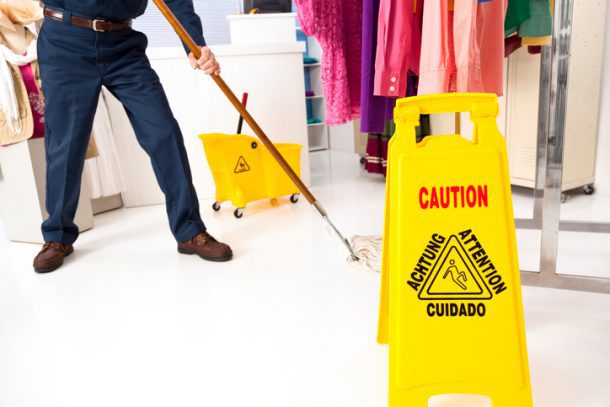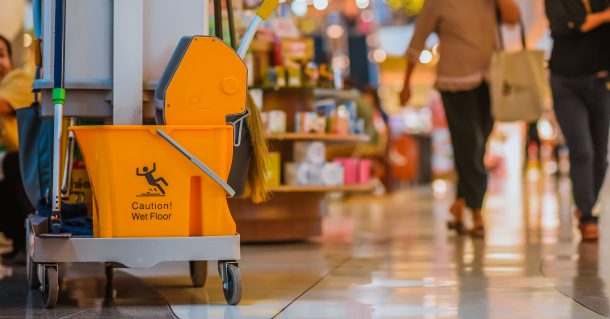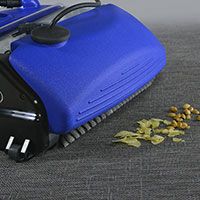
To help businesses protect their floors – and their customers – from the ravages of weather-wear, American service provider Cintas Corporation has shared a floor cleaning checklist to help keep floors clean, protected and in top condition.
Unexpected weather conditions plague businesses, no matter what time of year. Due to their unpredictable nature, foreseeing what type of cleaning a retail facility will need to keep its floors clean on a daily basis can prove difficult.
“A clean floor speaks volumes about a business,” said John Engel, director of marketing, Cintas.
“If the weather causes customers and employees to track in mud, rain and debris, the floors see the worst of it. By following a comprehensive floor cleaning program, facilities can enjoy peace of mind and know they’re doing their best to protect and project a positive image onto customers.”
Cintas offers the following checklist to help organisations enhance their floor cleaning program:
Schedule periodic deep cleans
Floor deep cleans use cleaning chemicals, dwell time and high-pressure steam to sanitse and remove build up and accumulation of dirt and grime. From hard surfaces such as tile and natural stone, to wood or vinyl flooring, periodic deep cleans help improve the static coefficient of friction by removing layers of dirt that accumulate over time.
Implement a matting program
Businesses without proper entrance matting will have a hard time keeping floors clean and hazards such as dirt, debris and precipitation at the door. In addition to eliminating the accumulation of slippery excess moisture and puddles, entrance matting of at least six feet can remove 40 per cent of soil, 12 feet can remove 80 per cent of soil and 36 feet of matting can remove 99 per cent of soil.
Perform daily cleaning
Spills, tracked in debris and dust accumulation can cause floors to become sticky or slippery. Supervise employees to ensure intermittent floor cleaning is performed at regular intervals and immediately after spills. Consider using floor mops with an on-board cleaning chemical reservoir, such as a pulse mop, to quickly clean up spills throughout the day.
Use the correct dilution for cleaning chemicals
Incorrect cleaning chemicals or the wrong dilution may not clean as well as intended and may cause floors to be sticky or slippery. Make sure employees know which products to use, where to use them and how to dilute them properly. Consider installing an easy-to-use, push-button cleaning chemical dispensing system that ensures the correct dilution to optimise cleaning.
Upgrade your cleaning tools
Tool selection is an important step in ensuring floors are properly cleaned. Microfibre cleaning tools offer superior cleaning performance and better infection control than traditional mops and towels. Microfibre products are proven to remove 80 per cent more dust and dirt than traditional mops, ensuring floors are cleaner.
Also consider using a dual-chamber mop and bucket system instead of a traditional mop and bucket when cleaning floors. Dual-chamber systems separate dirty mop water from the cleaning chemical solution to prevent dirt from being mopped back onto floors.




